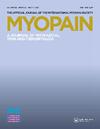Treatment Outcomes Among Individuals in a Musculoskeletal Pain Rehabilitation Program Related to the Prevalence and Trends in the Dispensing of Prescribed Medications
引用次数: 3
Abstract
Abstract Objectives: Prescribed medication consumption for chronic, non-malignant pain may not be beneficial. This study investigated how self-reported treatment outcomes among individuals in a musculoskeletal pain rehabilitation program are related to the prevalence and trends in the dispensing of prescribed medications. Methods: Patients with musculoskeletal pain were recruited as they began a rehabilitation program. Each participant completed a self-administrated questionnaire on pain, health status and socioeconomic factors in the beginning and at the end of the rehabilitation period. Each individual’s baseline data from the rehabilitation sample was linked to the national Norwegian Prescription Database [2004–2010]. Dispensing prescribed medications in the groups of centrally acting analgesics [opioids], anxiolytics and hypnotics were studied. Results: A total of 1562 individuals participated, and there was no loss to follow-up. Controlled medications [Schedule 2] were prescribed in 36.4% [n = 569] of the sample population. Women were overrepresented in the sample. The dispensing of prescribed hypnotics is more frequent than the dispensing of prescribed analgesics and anxiolytics. Old age, low education level and living alone are related to being prescribed hypnotics and anxiolytics, while gender [female] is related to being prescribed analgesics. A reduction in pain intensity over the two observations in time [pre- and post-treatment] is related to the prescription of hypnotics, while a lack of improvement in physical capacity during the rehabilitation program is significantly related to being prescribed analgesics. The improvement in overall health is significantly related to being prescribed anxiolytics. Conclusions: Dispensing of prescribed analgesics, anxiolytics and hypnotics among individuals in rehabilitation with chronic musculoskeletal pain is associated with treatment outcomes and should be taken into account in designing the rehabilitation intervention.肌肉骨骼疼痛康复项目中个体的治疗结果与处方药配药的流行和趋势有关
目的:处方药物消费慢性,非恶性疼痛可能不是有益的。本研究调查了肌肉骨骼疼痛康复项目中个体自我报告的治疗结果与处方药物分配的流行和趋势之间的关系。方法:招募开始康复计划的肌肉骨骼疼痛患者。每位参与者在康复期开始和结束时完成了一份关于疼痛、健康状况和社会经济因素的自我管理问卷。来自康复样本的每个个体的基线数据与挪威国家处方数据库[2004-2010]相关联。研究了中枢作用镇痛药[阿片类药物]、抗焦虑药和催眠药组的配药情况。结果:共有1562人参与,随访无损失。36.4% [n = 569]的样本人群使用了管制药物[附表2]。女性在样本中的比例过高。处方催眠药的配药比处方镇痛药和抗焦虑药的配药更为频繁。年龄大、文化程度低、独居与开催眠药、抗焦虑药有关,性别[女性]与开镇痛药有关。在治疗前和治疗后的两次观察中,疼痛强度的降低与催眠药物的处方有关,而在康复过程中,身体能力缺乏改善与处方止痛药显著相关。整体健康状况的改善与服用抗焦虑药有显著关系。结论:慢性肌肉骨骼疼痛康复患者处方止痛药、抗焦虑药和催眠药的配药与治疗效果有关,在设计康复干预措施时应予以考虑。
本文章由计算机程序翻译,如有差异,请以英文原文为准。
求助全文
约1分钟内获得全文
求助全文

 求助内容:
求助内容: 应助结果提醒方式:
应助结果提醒方式:


